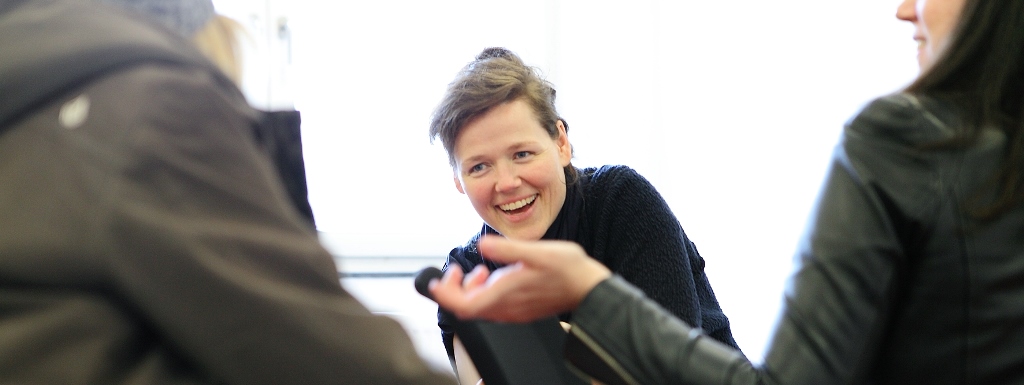Tables and Chairs to Live With
Thoughts on the physicality of education and scholarly work, and its workings in artistic research
Round Tables to Discuss with
Drawing on Ahmed’s “tables to think with,” a roundtable is also a working table, but can be only thought of in a collective, often semi-public, constellation, arranged for a group of people. Functioning as working table, a roundtable is often much bigger in scale than a working table for an individual and is used in administrational and educational settings. The term “roundtable” conflates two aspects, which refers to the form of the table and the spatial arrangement, that is, people sitting “a-round” the table. The different spatial constellations that a roundtable demands, consequently also include a change of themes, expectations, and layers of meaning that people bring to the roundtable. In reference to gatherings of individuals in which all are accorded an equal status, the term “roundtable” is most notably a symbol for democratic structures in our times. The democratic expectations and layers of meaning seem to be embodied in the material-spatial arrangements of bodies without necessarily having to postulate these every time anew. Therefore, the symbolic notion of “roundtable” doesn’t remain in a pure linguistic mode, but rather, has to be seen as bodily-structural exercise (see Bourdieu 1977, p. 91 (*3) and Alkemayer, in Krauss 2008, pp.45-64
(*3) and Alkemayer, in Krauss 2008, pp.45-64 (*6)) in democratic behavior every time that individuals perform, e.g., a roundtable discussion. Since all practices are performed in relation to their location, the spatial arrangement of bodies and objects is particularly important in its entanglement with its socio-political implications. In this way, a roundtable discussion must be seen as socio-symbolic-bodily practice. This entanglement is what Bourdieu calls “structural exercises by which is built up practical mastery of the fundamental schemes” (Bourdieu 1977, p. 91).
(*6)) in democratic behavior every time that individuals perform, e.g., a roundtable discussion. Since all practices are performed in relation to their location, the spatial arrangement of bodies and objects is particularly important in its entanglement with its socio-political implications. In this way, a roundtable discussion must be seen as socio-symbolic-bodily practice. This entanglement is what Bourdieu calls “structural exercises by which is built up practical mastery of the fundamental schemes” (Bourdieu 1977, p. 91). (*3)
(*3)
However, further analysis of the circular arrangement of a roundtable can hardly hold its promise of equality. An example from my own experience when I was part of a series of roundtable discussions connected to my work at the Art Academy Utrecht, will indicate some aspects. The first time I was invited to the roundtables I hardly knew anybody. Coming into the room where everybody already was seated, I faced an enclosed circular – roundtable arrangement. Closely seated side by side, it was as if the seated group had collectively turned their back to the outside world. Once I overcame this obstacle and found my place in the circle, I faced another interesting aspect. The circular order renders all participants visible to each other. There is no possibility of placing oneself in the back of the rows, which would give a certain protection if needed – especially for a newcomer, which I was in this setting.
Considering the fact that the circular arrangement supports a greater range of visibility for all actors in the circle, it certainly privileges those who know how to deal with this visibility or who have the power to use the visibility towards their ends.
Annette Krauss ( 2014): Tables and Chairs to Live With. Thoughts on the physicality of education and scholarly work, and its workings in artistic research. In: p/art/icipate – Kultur aktiv gestalten # 05 , https://www.p-art-icipate.net/tables-and-chairs-to-live-with/



 Artikel drucken
Artikel drucken